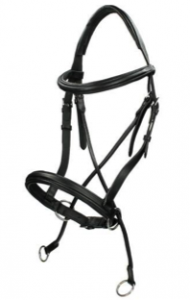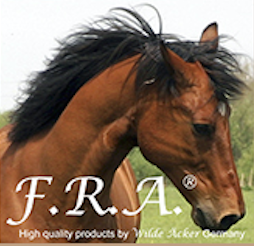
F.R.A.® leather care
Purchase
Good leather products require a substantial investment. F.R.A.® leather products are unique, handmade from natural materials. Characteristic for this can be small irregularities in material or structure. Correct use and good care of this natural material guarantee that you can enjoy it for a long time. This leather cleaning and nourishing guide contributes to this, so read it carefully. Before leaving the warehouse, every F.R.A.® leather product undergoes a quality check and a leather feed. It is recommended to repeat this care before the 1st use.
F.R.A.® wishes you a lot of pleasure with your purchase.
Influences on sustainability:
Leather is a strong natural product. Aspects such as use, application of force, friction, abrasive dust, dirt, sweat, manure, sunlight and, for example, an abundance of water, damage the leather surface and the underlying leather structure. These threats in use cause (hair) cracks in the finished top layer and damage the structure. Without proper care of the leather, these threats can quickly affect the quality and thus the durability of the leather.
General maintenance:
Leather as a natural product must, even when not in use, be cleaned regularly and especially nourished to keep it in good condition, in order to prevent premature extraordinary wear and tear. It is important to use good quality organic or synthetic leather care products. General household products such as salad oil and household cleaners attack the leather and are therefore definitely unsuitable! Leather care products are designed for use in leather, so to penetrate into the skin, so beware of hypersensitivity of your own skin.
Maintenance, cleaning:
In fact, care would be good after every use, at the very least however, the leather product requires weekly care when used intensively. You start cleaning and in order to be able to get into all the nooks and crannies, you must first take it apart completely. Cleaning is done with a damp cloth or sponge using leather cleaner, also known under the name saddle soap. This way you remove dirt and grease and open the pores in the leather again, and then use a care product to nourish the leather. Saddle soap should be used sparingly, as it removes grease and too much of it could also remove the natural fats from the leather structure. There are variants in saddle soap or leather cleaner. Always read and follow the instructions for use of the purchased saddle soap or leather cleaner.
Maintenance, feeding, oil or grease?
Depending on its flexibility, leather always needs a certain amount of nourishment. It is good to nourish leather immediately after cleaning, greases and oils are then well absorbed. Depending on the finish, there are natural, smooth and usually covered leather finishes, leather grease or leather oil can absorb quickly or less quickly. The underside of leather is generally less smooth or even uncovered and therefore more porous, an oil or grease is easily absorbed here.
If, after delayed maintenance or long-term non-use, the leather has become hard and stiff due to drying, one or more feeds will be applied by means of oil to first make the leather supple again and then to be able to switch back to nutrition with fat. It goes without saying that a diet with oil penetrates deeper than a diet with fat. Realize that excessive oil feeding makes the leather on which forces are applied very vulnerable to stretching. In addition, the excessive use of oil will result in absorption in any synthetic materials present (foam inserts f.e.) and stitching, which will therefore be irreparably damaged. Also be careful with “non-leather” finishes, such as synthetic patent leather and Swarovski inlays, these finishes are susceptible to damage by applying care products such as oil and grease.
Grease? With really regular maintenance, a sparing grease diet will always be sufficient. Greases come in various shades, always use a suitable shade in order to achieve an even colour surface. It may be wise to do a colour impact test in a less visible place.
Maintenance, post-processing:
The post-cleaning you do with a dry, clean cloth, then let it dry (not in the sun). Store in a non-damp, dark room, so your leather is ready for the next use and you will enjoy it for years to come.
F.R.A.® crossed jaw straps and maintenance
Something about the technique in general and the vulnerability of crossed jaw straps in particular of (all brands) bitless bridles.
Unlike with bit bridles, where rein aids are applied via the rein to the bit and thus directly in the mouth (the bridle only has the function of holding the bit in place), when using a bitless bridle, the aids that provide a rider via the reins to the horse’s head go via the bridle itself.
Depending on the degree of input of those rein aids (more or less powerful), it makes a bitless bridle vulnerable to damage. In particular, the crossed jaw straps of the systems with a crossed rein action can therefore wear or even break relatively quickly.
Crotch straps are available in different versions, made of round or plain leather, and there are also crossed jaw straps made of polypropylene cord. The leather versions in particular require extra attention with regard to maintenance. Read the extensive leather maintenance advice on the back, too much oil or grease makes the leather too soft and thus too elastic and therefore stretches, too little or no maintenance can make the leather weak and brittle and can cause it to break. Check the crossed jaw straps regularly for wear and replace them in time, the sets are available separately.
Copyright Wilde-Äcker Germany 2016

